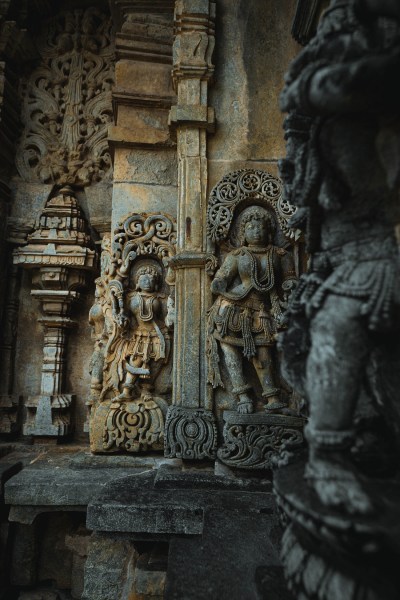What Makes The Hoysala Temples Of Karnataka A UNESCO Heritage Site
These temples are a blend of various Southern architectural traditions, yet retain their distinctive style, making them a tangible part of India’s cultural heritage
The Hoysala era, which started with local chieftains rising to power in the 10th century, is noted for the economic and cultural prosperity that marked this time. But the epitome of the grandeur of the empire is at its best in the form of many temples that received royal patronage, most notably, the Hoysala Temples. These temples, constructed during the illustrious reign of the dynasty between the 12th and 13th centuries, have earned worldwide acclaim for their intricate architectural marvels, and have recently been inscribed onto UNESCO’s World Heritage List.
 The Keshava Temple in Karnataka. Picture: Shutterstock
The Keshava Temple in Karnataka. Picture: Shutterstock
Historical Significance
The Hoysala dynasty, at its height, ruled over Karnataka, parts of Tamil Nadu and south-western Telangana and flourished during a period of cultural renaissance in India. It was during this time that the Hoysala rulers embarked on a remarkable temple-building spree, commissioning some of the most stunning architectural masterpieces in South India. The Hoysala Temples, dedicated to Shiva and Vishnu, represent a unique blend of different architectural and religious traditions, making them a sight to behold.
 An intricately carved wall at the Hoysaleswara Temple. Picture: Unsplash
An intricately carved wall at the Hoysaleswara Temple. Picture: Unsplash
Officially called the Sacred Ensembles of the Hoysalas, the site includes three temples: Hoysaleswara Temple on the banks of Dwarasamudra tank in Halebidu, the Chennakeshava temple in the complex at Belur and and the Keshava Temple in Mysore district. These temples are known for their soapstone sculptures, a stone which is originally soft, allowing for easier carvings as it becomes harder over time. The temples also follow a star-shaped plan, called ‘vimana’, and are home to multiple shrines, towers and a hall called ‘mandapa’. The ‘garbha griha’, or the sanctum sanctorum is at the heart of the temple and houses the main shrine placed on a pedestal. known as “vimana,” which features multiple shrines, intricate towers, and an open-pillared hall called “mandapa.”
The Chennakesava Temple at Belur, constructed by King Vishnuvardhana in the 12th century, is famous for the detailed architecture and craftsmanship while the Hoysaleswara Temple at Halebidu, is a twin-temple dedicated to Lord Shiva, with intricate carvings that depict animals, miniature dancers, scenes from Hindu texts on its sculpted walls and pillars.
 The Chennakeshava Temple in Belur. Picture: Shutterstock
The Chennakeshava Temple in Belur. Picture: Shutterstock
UNESCO World Heritage Status
In recognition of their historical and architectural significance, UNESCO designated the Hoysala Temples as a World Heritage Site recently. This recognition catapults these temples, which had been on the tentative list for the honour since 2014, onto the global stage, and acknowledges their exceptional craftsmanship while underscoring the importance of preserving and celebrating India’s diverse cultural heritage. These temples, constructed during a time of great artistic development in Southern India, are a blend of various South Indian architectural traditions, yet retain their distinctive style, making them a tangible part of India’s cultural heritage.







 These temples have been recently inscribed onto UNESCO's World Heritage List. Picture: Shutterstock
These temples have been recently inscribed onto UNESCO's World Heritage List. Picture: Shutterstock



